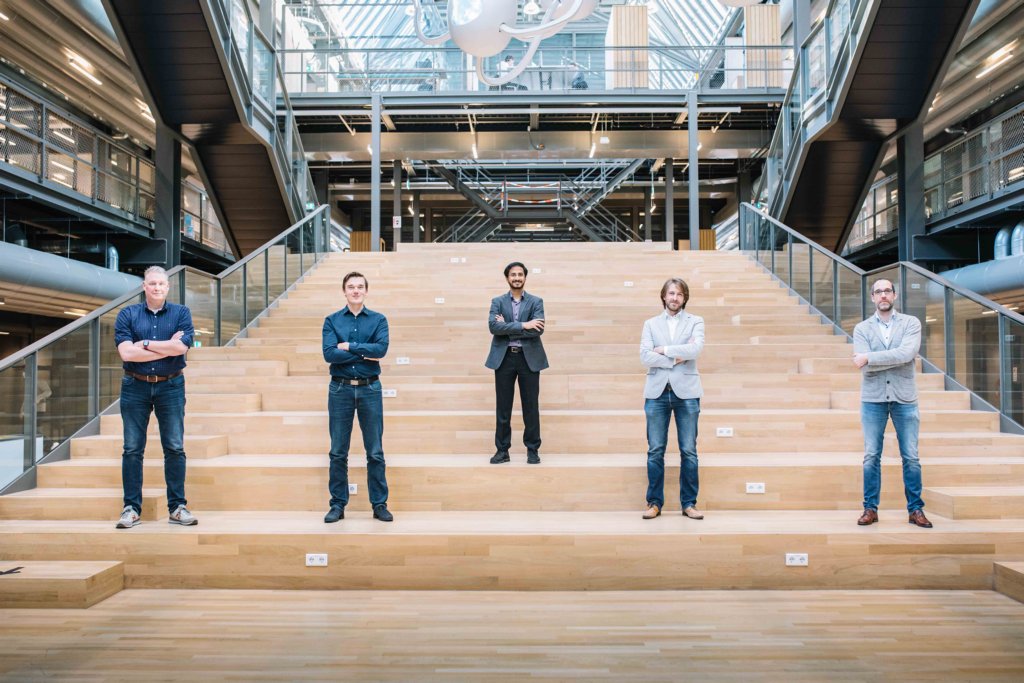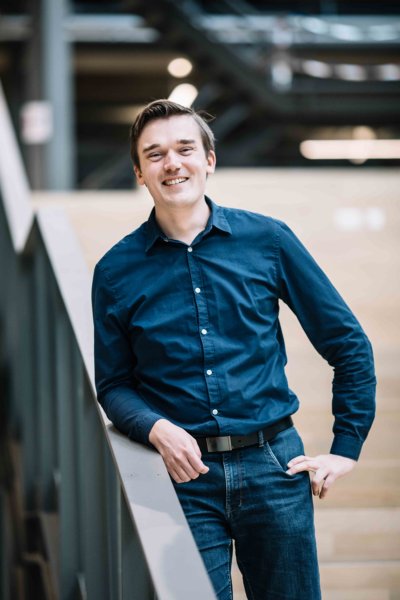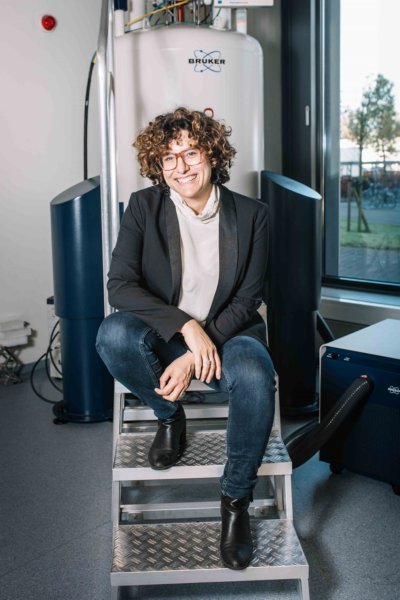The right treatment, in the right way, at the right time. The 4TU.Federation interviewed Tenure trackers Camilla Terenzi (WUR) and Jelmer Wolterink (UT) on the dream that connects the 4TU Precision Medicine team.
Photos: Dieuwertje Bravenboer
What is the 4TU Precision Medicine programme all about and what’s your role in it?
Camilla Terenzi (CT): It’s a dream that we share with the whole team made up of people with different areas of expertise.
Which areas of expertise?
CT: Our consortium includes scientists from various backgrounds, ranging from fundamental physics to computer science and applied mathematics. We bring all of these different pieces of knowledge together. Knowledge about medical imaging techniques, for example. A specific example is an MRI scan of the heart. Can we speed up the scan and also ensure that the image the scan produces still contains the same information as it does now? Or can we be more effective in retrieving information that is currently collected but is left unused? How can we use our expertise to ensure that an image actually shows everything you’re measuring? Could physics be useful here and will it help us to advance diagnostics a step further?
What are you proud of?
JW: A really good example in my view is the MRI scanner that’s set up in the TechMed Centre in Twente. The testing facility in which this MRI scanner is placed is identical to that in hospitals. Scientists from the University of Twente are working with their counterparts at TU Delft, Wageningen University (WUR) and Eindhoven University of Technology (TU/e) to find out how much data you can remove from an MRI scan while still getting a valuable image. By learning where exactly the clinical information is hidden, you could in the future be able to reduce the time that a patient spends in the scanner from the current 45 minutes maybe to just three minutes. As well as benefiting the patient’s well-being, that also greatly improves efficiency!
There’s also another great project. In it, researchers from the University of Twente, TU/e and TU Delft are using an ultrasound device to measure how microscopically small bubbles – smaller than red blood cells – respond to ultrasound. The device has the sensitivity to detect these bubbles, thereby providing a live image of the organ perfusion. We intend to use AI to see whether we can further improve these techniques. Applications include ultrafast 3D imaging of blood flow in the abdominal artery or accurately measuring new blood vessel formation in tumour tissue. This information will help vascular surgeons and oncologists to develop better diagnoses and treatment plans that focus on each specific patient.
CT: The development we’re experiencing as scientists can equally well be described as a success. As a result of this joint programme, you discover new avenues of research. For example, although I don’t have a background in medical physics, I’m being encouraged by my fellow researchers to develop that side of myself and engage in discussion with them. Exchanges like that produce lots of new ideas and therefore also achieve a high impact when it comes to peer-reviewed articles for scientific journals.
And Jelmer also has something to be proud of?
JW: Yes, that's right! Last November, I received a VENI grant from the NWO for EUR 250,000. As a scientist, that gives you the opportunity to develop a new line of research. The money will be spent on improving the risk prediction for rupture of the main abdominal artery, the aorta. The chance of rupture occurs when the aorta widens. Currently, surgical intervention is usually done if this enlargement exceeds 5.5 cm, but rupture can also occur if an aorta is narrower than 5.5 cm. On the other hand, surgical intervention is not without risk and you only want to operate on patients who really need it. My plan is to combine AI and the various imaging techniques in order to achieve a better assessment of the risk of rupture and treat patients in a more targeted way. As well as with doctors, I also work a lot with researchers from other universities, including those in the 4TU programme. This helps to ensure that the knowledge is circulated more rapidly across different specialisations.






